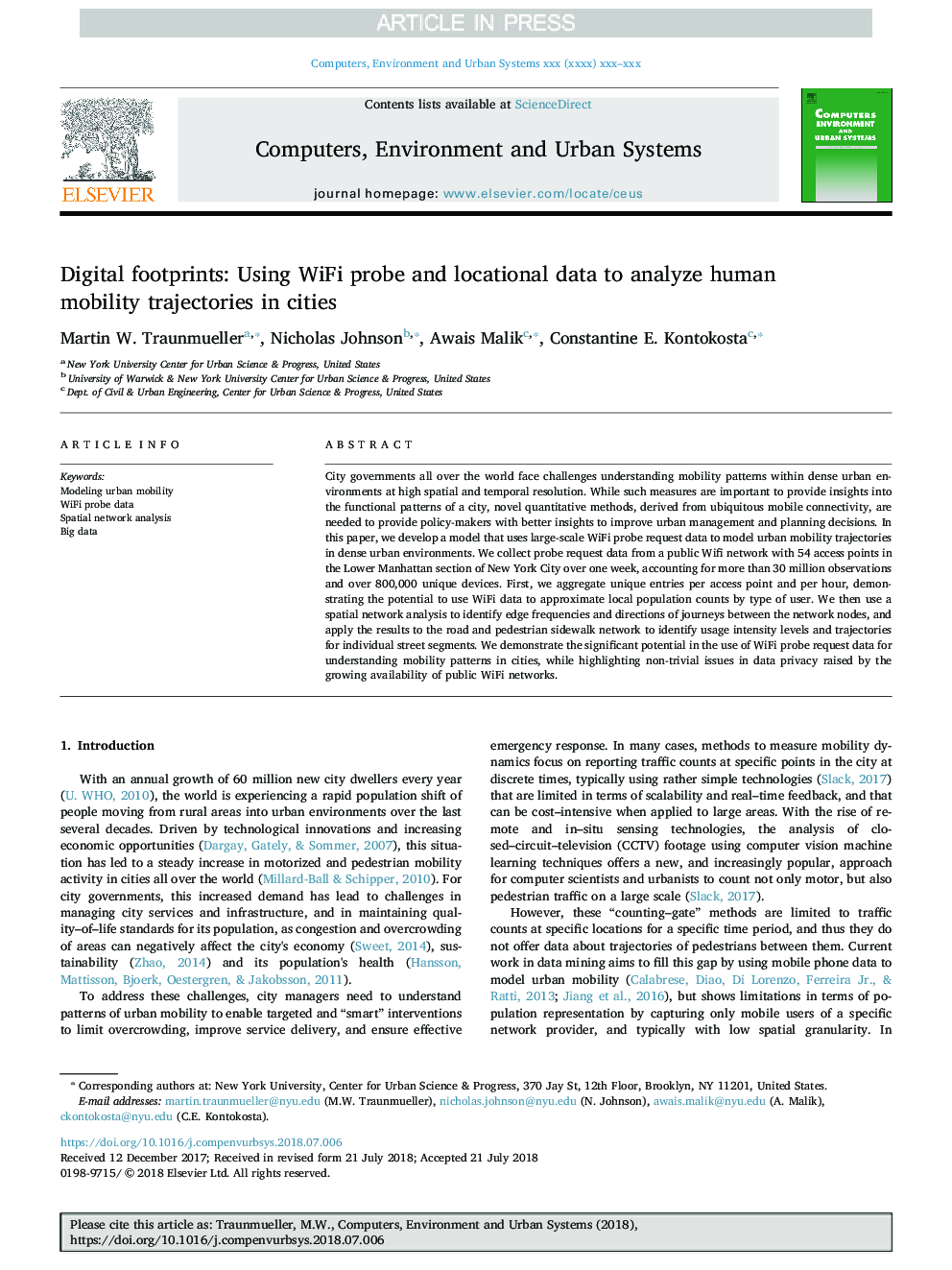| Article ID | Journal | Published Year | Pages | File Type |
|---|---|---|---|---|
| 10151434 | Computers, Environment and Urban Systems | 2018 | 9 Pages |
Abstract
City governments all over the world face challenges understanding mobility patterns within dense urban environments at high spatial and temporal resolution. While such measures are important to provide insights into the functional patterns of a city, novel quantitative methods, derived from ubiquitous mobile connectivity, are needed to provide policy-makers with better insights to improve urban management and planning decisions. In this paper, we develop a model that uses large-scale WiFi probe request data to model urban mobility trajectories in dense urban environments. We collect probe request data from a public Wifi network with 54 access points in the Lower Manhattan section of New York City over one week, accounting for more than 30 million observations and over 800,000 unique devices. First, we aggregate unique entries per access point and per hour, demonstrating the potential to use WiFi data to approximate local population counts by type of user. We then use a spatial network analysis to identify edge frequencies and directions of journeys between the network nodes, and apply the results to the road and pedestrian sidewalk network to identify usage intensity levels and trajectories for individual street segments. We demonstrate the significant potential in the use of WiFi probe request data for understanding mobility patterns in cities, while highlighting non-trivial issues in data privacy raised by the growing availability of public WiFi networks.
Keywords
Related Topics
Physical Sciences and Engineering
Computer Science
Computer Science Applications
Authors
Martin W. Traunmueller, Nicholas Johnson, Awais Malik, Constantine E. Kontokosta,
